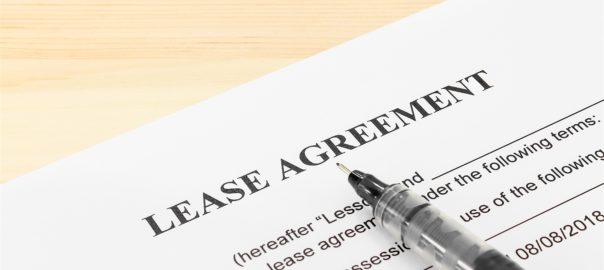4 Tips For Handling The End Of A Lease
By JD Esajian on April 7, 2017
Transitioning from the end of the current lease to the start of a new one is always a tricky time for any landlord. For just a few critical weeks you need to balance the needs of your new tenants while still protecting yourself from your current ones. If you are not careful you can rush the move out process only to find significant damage you missed or overlooked. Once the tenant is out it is often too late to retroactively assign blame and seek restitution. At the same time, you also need to keep an eye out for long term issues that may be starting to present themselves in your property. You may go six months without doing much of anything with your rental property but the end of the lease will be filled with chaos if you don’t have a plan. Here are four things you can do that will make the transition as easy as possible.
- Lay Out A Plan With Your Tenants. The best way to avoid chaos is by laying out a plan for both tenants. It is important that you give both sides of tenants enough time to do whatever they need to do on their end. For your current tenants it is a good idea to start communication at least 60 days from the end of the lease. Let them know exactly what your move out expectations are and how you want the property to look. Ask them if there are any pressing repairs they have questions on or need help with. You need to make it clear that you are not trying to hold their security deposit but just want to deliver the property to the next tenants just like they found it. For your new tenants, you should let them know what they can and cannot do a far as storage and showings. The earlier you let both parties know what is going on the easier things will be.
- Give Yourself 48 Hours At The End Of The Lease. As much as you want to squeeze every dollar out of the property you also need to be sensible. It is difficult turning a rental property over in just a few hours. You are better off in the short and long term giving yourself two days to do everything you need to. Even if the rental appears clean you need to have it professionally done. This eliminates any chance that your new tenant will find an issue with the property that can get the lease off on the wrong foot. You also want to look at the property while it is vacant so you can gauge the current condition. When your tenants are in the property it is difficult getting a feel of items that may need to be upgraded, repaired or replaced. Use the day after the lease to inspect the basement, bathroom tub, windows, flooring and even walk the exterior. Many times, you will catch something that is a minor problem now but in a years’ time could break the bank.
- Take Picture And Videos. You should only perform the end of lease inspection when all your tenant’s belongings are out of the property. There are some tenants who want to use their security deposit on another property and will ask for the inspection done a few weeks earlier. Even if they are the best tenants you need to protect yourself all the way through the end of the lease. Tell them that it is your policy to wait until the end of the lease or only when the rental is vacant to perform the inspection. You will find that even the nicest tenants will try to hide some property damage. Your tenant is certainly welcome to walk the property with you during the inspection but you should also take pictures and videos as well. This prevents and word of mouth arguments. If there are issues regarding the condition you simply compare the initial walk through video with the end of the lease and there should be no misunderstanding. You can ask your tenant to repair any damage or work out a dollar amount for you to have it done. Whatever you do always support your decision with as much physical evidence as possible.
- Walk The Property With Your New Tenant. Once your tenant is out, the property is cleaned, your inspection is done and you have evaluated the condition you can get your new tenant in the property. As we mentioned your goal should be to get this done within 48 hours of the end of the lease. Prior to them getting all their stuff in the house you should spend a few minutes and walk the property with them. Just like with the end of the lease inspection you should take a video or pictures as you walk the grounds with them. These items will be valuable to you at the end of the lease. In addition to generating evidence in case of property damage you can instruct your tenant where certain things may be or how to operate something in the house. You should always go under the assumption that they don’t know or understand anything and make things as easy as possible for them. You can leave a “how to” list including a garage door code and any important phone numbers they may need to know. Now is the time to ask them if they have any questions regarding the property, the lease or anything else before move in.
The end of the lease and the start of a new one will be a challenging couple of weeks. If you embrace this and map out a plan you will make the transition a smooth one.